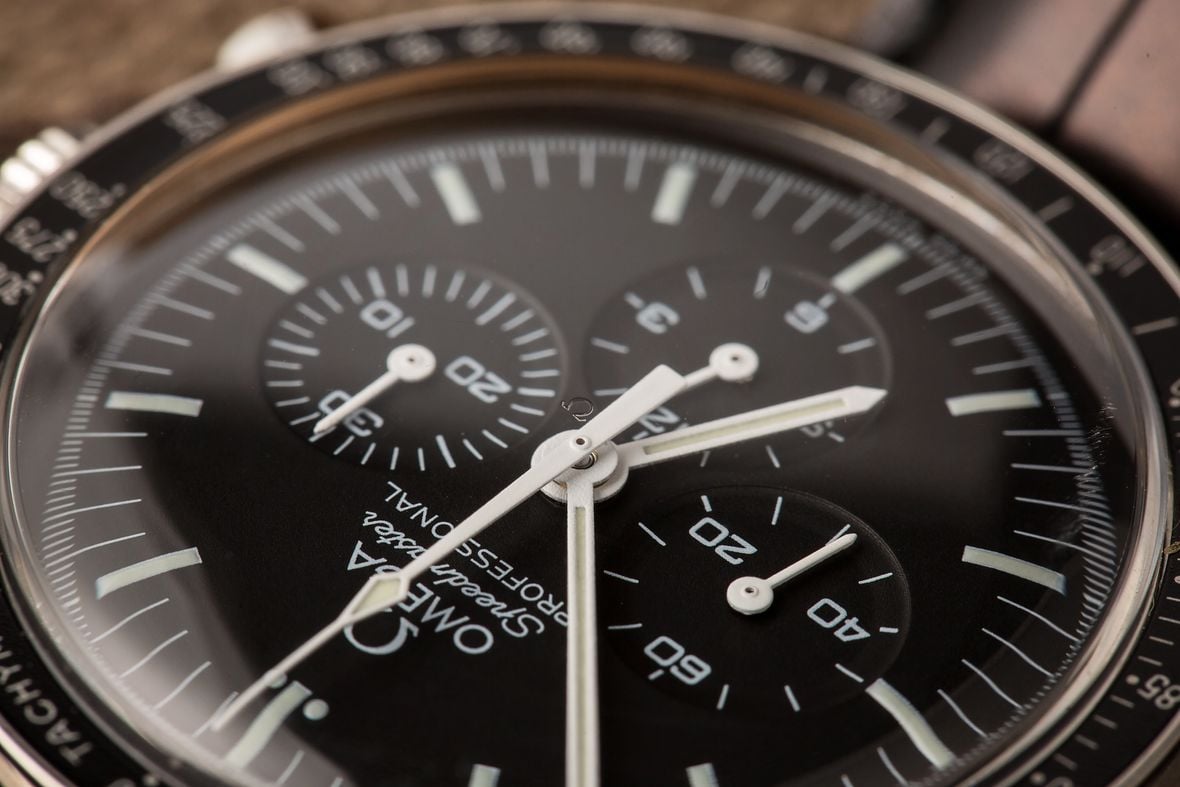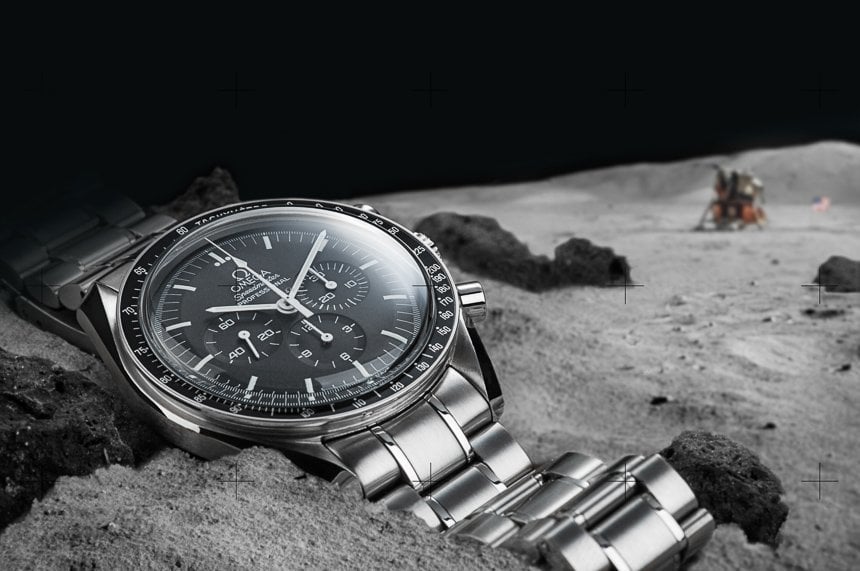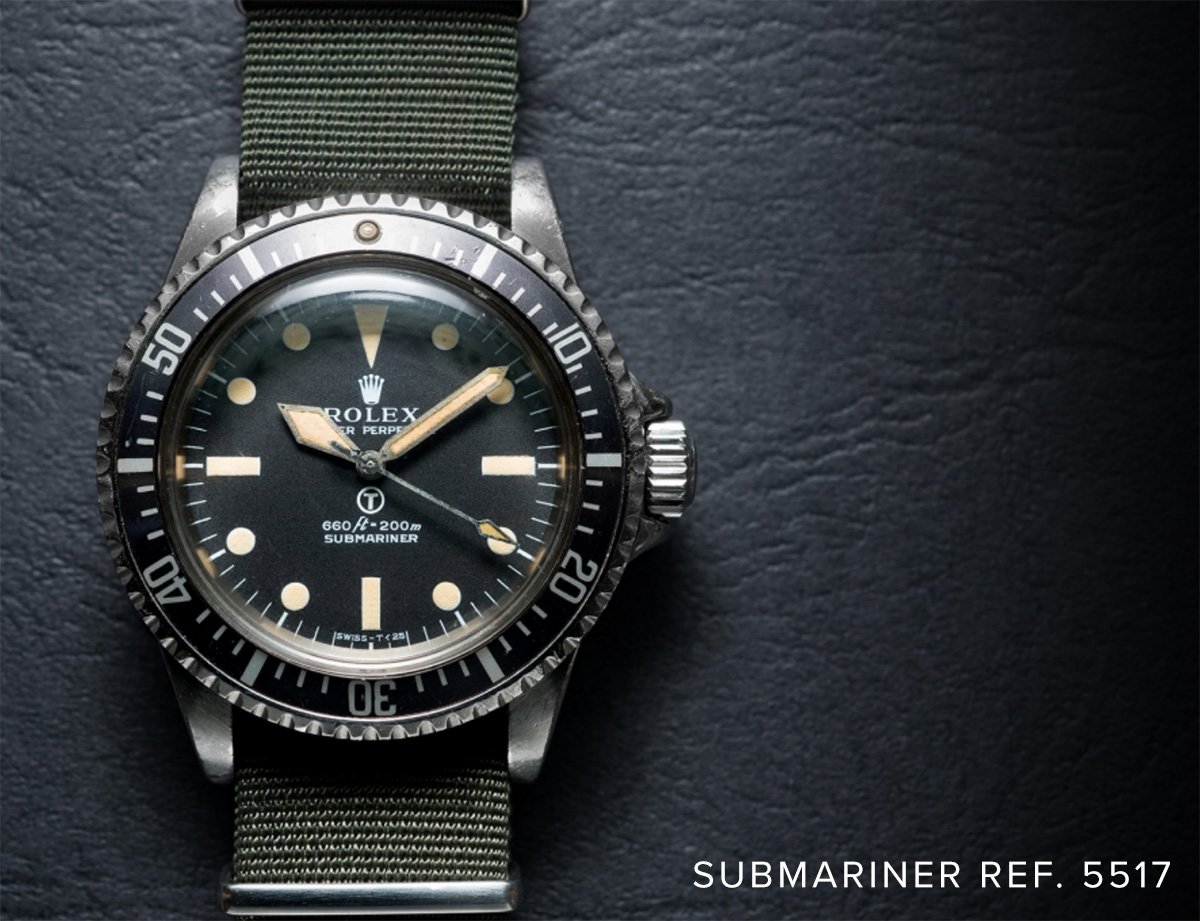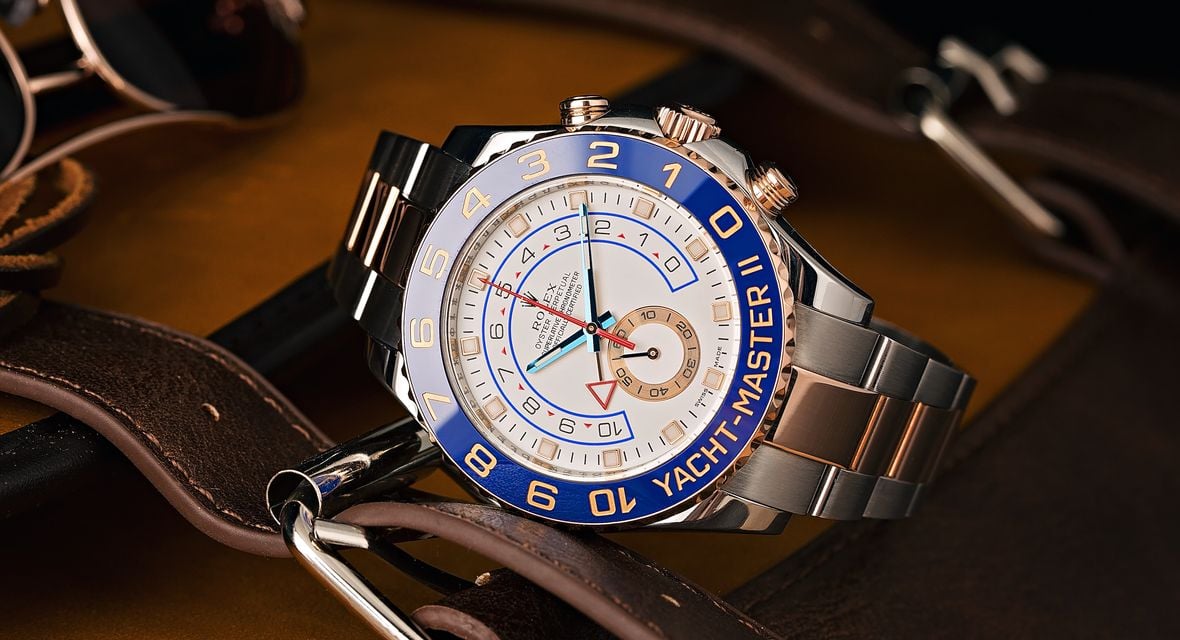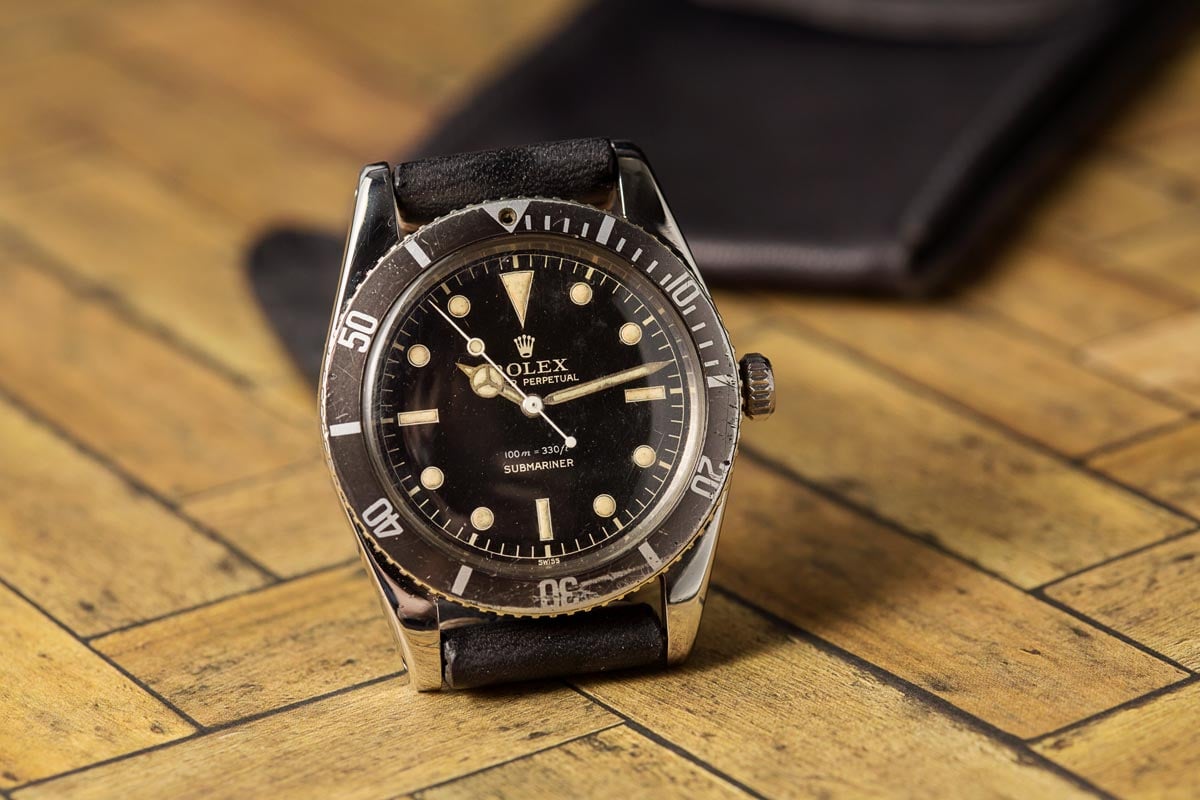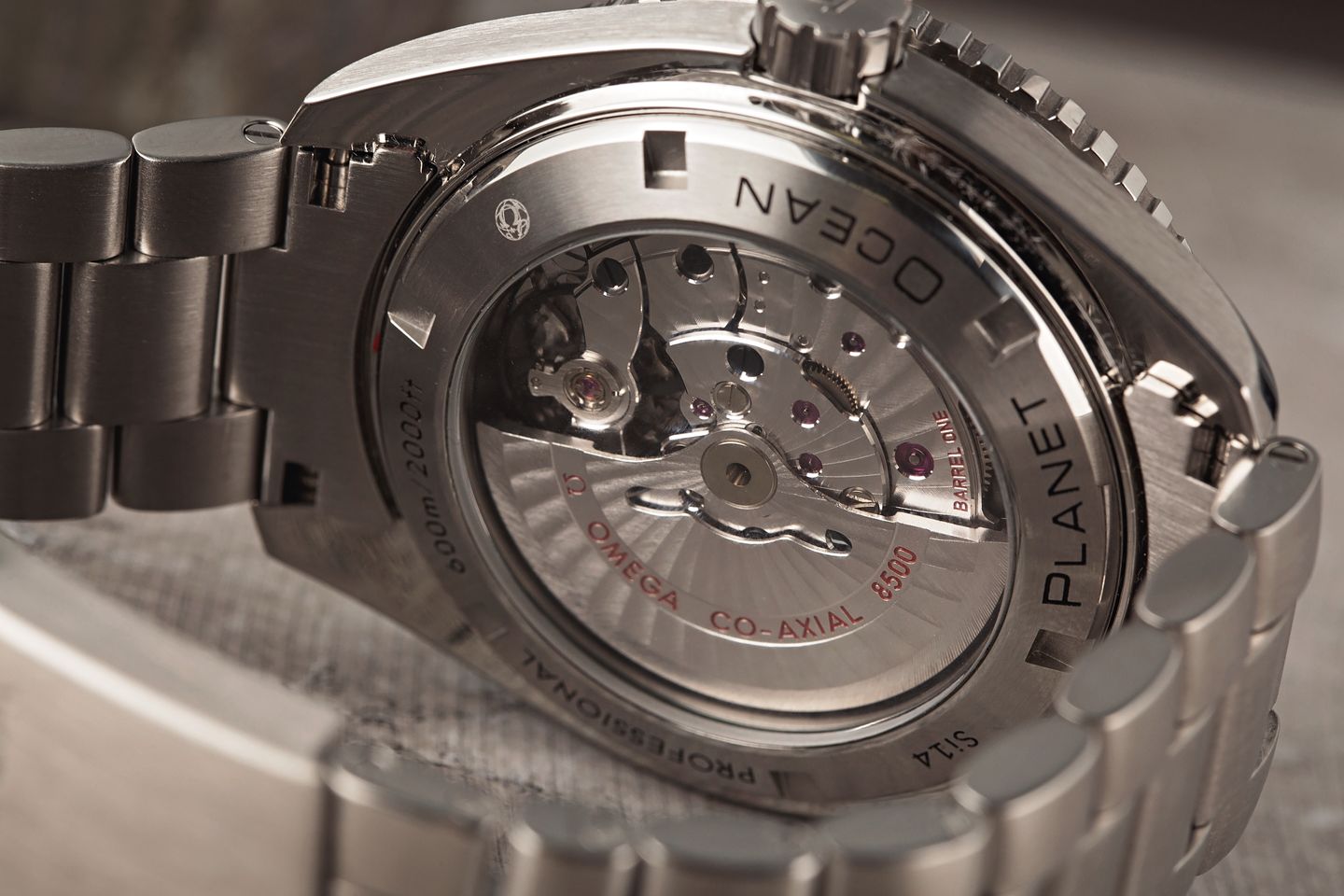When you think about the watches astronauts have worn on actual space missions, the name that immediately springs to most people’s mind is always the Omega Speedmaster. Among all the increasingly valuable vintage Omega Speedmaster watches, the true “holy grails” are the ones that have actually been worn on the surface of the Moon – or at least in space. Omega Speedmaster chronographs were the watches that NASA issued to Neil Armstrong, Buzz Aldrin, and Michael Collins during their Apollo 11 mission. Naturally, after that successful spaceflight, the Omega Speedmaster became known as the Moonwatch.
However, the first watch worn on the surface of the moon is only one of several different watches that have experienced life beyond the earth’s atmosphere. Omega’s history of space watches began before the historic 1969 lunar landing – and it continued well after. From the Speedmaster FOiS to the classic Moonwatch, join us as we take a closer look at the intriguing world of early Omega space watches.
Click here for our Ultimate Buying Guide on the Omega Speedmaster.
The First Omega Watch in Space
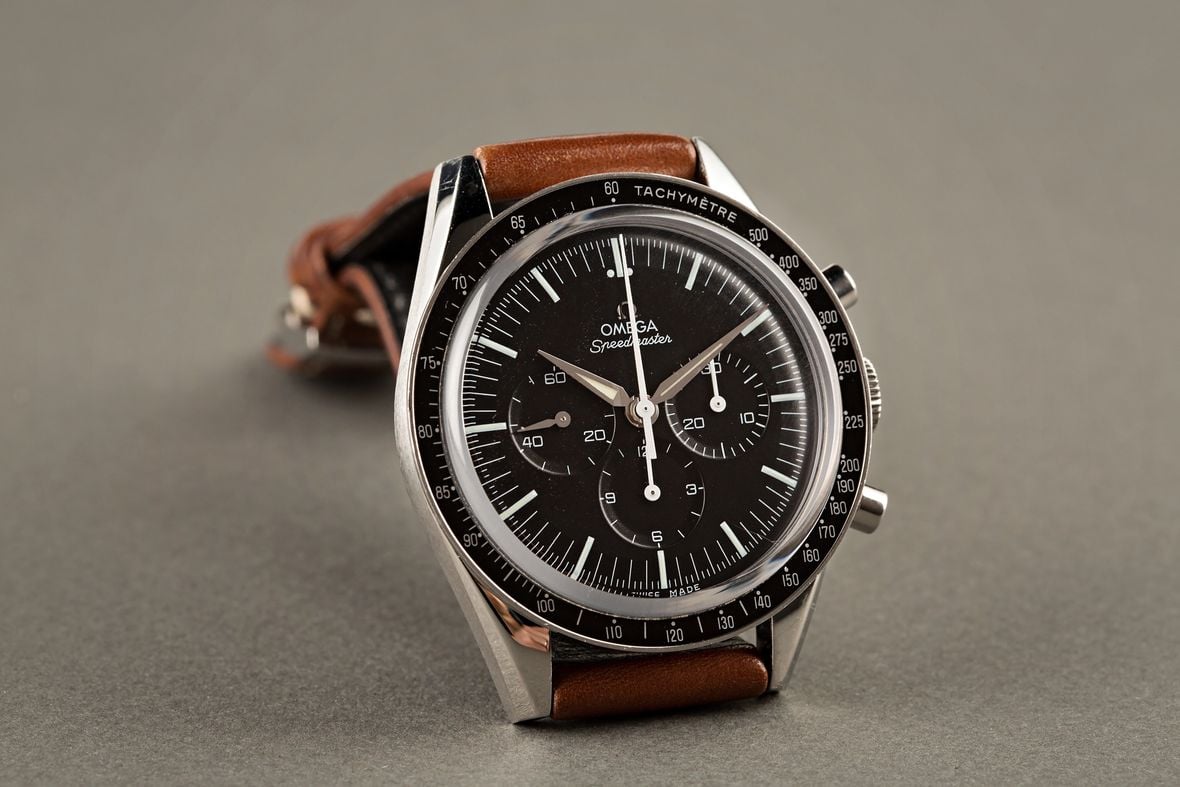
The First Omega Space Watch
NASA began flight qualifying Omega Speedmaster watches for all manned space missions and Extravehicular Activity (EVA) in 1965. However, on October 3, 1962, astronaut Walter “Wally” Schirra wore his personal Omega Speedmaster reference 2998 into space aboard the Mercury-Atlas 8 mission. Therefore, Wally Schirra’s ref. CK2988 was the very first Omega space watch – before NASA even officially granted the Speedmaster space-ready status!
The Reference CK2998 was the second generation Speedmaster and the first to feature the now signature-black tachymeter bezel. The previous reference had a steel bezel engraved with a tachymeter scale. The Speedmaster CK2998 was in production from 1959 until 1963; it was eventually replaced by the reference 105.002 and reference 105.003.
In 2012, Omega introduced the Speedmaster “First Omega In Space” re-edition, based on the original design of Reference CK2988 but with plenty of modern touches. While the re-edition is officially called the Speedmaster ref. 311.32.40.30.01.001, it’s affectionately known as the FOiS (which stands for “First Omega in Space”). Omega announced the end of the FOIS production in December 2020. It’s estimated that around 15,000 examples of the Speedmaster FOiS 311.32.40.30.01.001 were made and each piece is engraved with a unique number on the case-back.
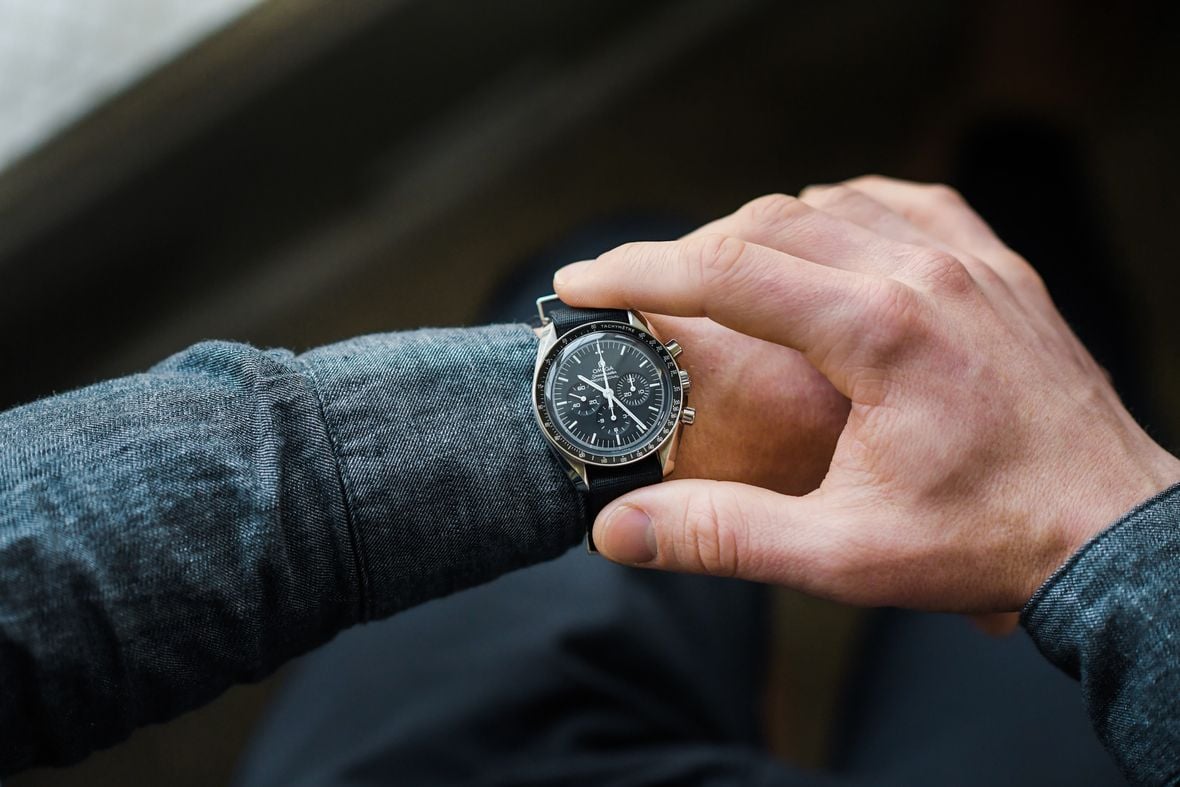
The Spacewalking Omega Speedmaster
On June 3, 1965, astronaut Ed White became the first American to walk in space when he opened the hatch door of the Gemini IV capsule and took a stroll. To be fair, it was more of a “swim” as he floated for around 20 minutes, attached to the capsule by a 23ft tether and 25ft umbilical. And strapped around his spacesuit during the Extravehicular Activity was the Omega Speedmaster chronograph. In fact, Ed White wore two Speedmasters during his historic spacewalk, one set to mission time of Gemini IV and the other set to Houston time. Unlike Wally Schirra’s personal Speedy, Ed White’s Speedmaster ref. 105.003 watches were issued by NASA.
The reference 105.003 was the watch that was tested and qualified by NASA for all manned space missions in 1965. By the time of the first U.S. manned space missions, the Speedy was into its third generation and had grown from the original 39mm case to 42mm, along with benefiting from the addition of O-ring gaskets around the pushers to protect against water ingress.
Crucially, it was also driven by the Caliber 321, a joint venture between Omega and Lemania and used by other illustrious names in the industry such as Patek Philippe and Vacheron Constantin. Recognized as one of the best chronograph movements ever made, it had particular resilience to magnetic fields and shock, which would prove to be vital attributes for its later role.

Flight Qualified By NASA For All Manned Space Missions
With NASA gearing up for the Gemini and Apollo missions, both of which would require crews to perform spacewalks, they began searching for watches that could handle the extreme conditions. Beginning that same year, they gathered chronographs as options for space watches from several manufacturers, including Rolex, Longines, and Breitling, and subjected them to the ominous-sounding Qualification Test Procedures.
The three models out of six that survived went on to be put through a further 11 trials, commonly thought of as the most arduous assessments any watch has been put through before or since. Examined for reliability in the face of massively high and low temperatures, resistance to pressure, humidity, acceleration, decompression, and vibration – essentially everything that the astronauts themselves would face – only the Omega Speedmaster passed the battery of tests.
Ed White tragically died in 1967, along with astronauts Virgil “Gus” Grissom and Roger B. Chaffee, in a fire during pre-launch testing for Apollo 1. According to a letter penned by Ed White’s son published on Fratello Watches, one of Ed White’s Speedmasters survived the fire and NASA presented it to the astronaut’s widow. This watch was later sold by Ed White’s son to a collector in Japan.
In 2020, Omega introduced the Speedmaster Caliber 321 “Ed White” ref. 311.30.40.30.01.001 tribute watch, complete with vintage design details such as a dot-over-90 bezel, a step dial, no crown guards, and of course, the legendary Caliber 321 manual-winding movement.
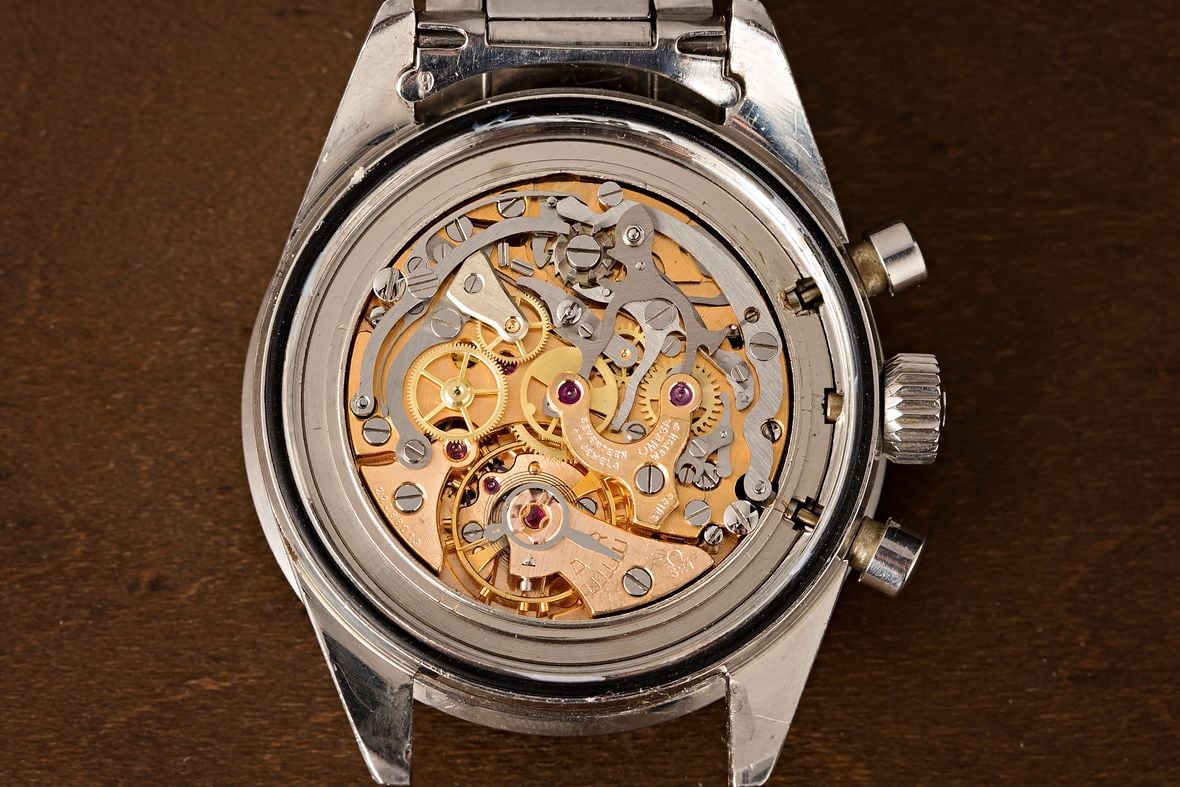
The Speedmaster Lands on the Moon And Goes Missing
The Speedmaster’s greatest moment (so far at least) came on the 20th of July in 1969, when Buzz Aldrin stepped out onto the lunar surface with his Omega on his arm. Neil Armstrong had left his watch in the lunar module as a backup for the malfunctioning electronic timing system, so the second man on the moon actually wore the first watch.
Aldrin’s piece, possibly the most important horology artifact of them all, was sadly stolen a few months later and never recovered. So, the most famous Moon watch of them all is missing, which raises the possibility that it could turn up for sale someday. It would no doubt give the record set by Paul Newman’s personal $17.8 million Rolex Daytona a run for its money.
So, how did Buzz Aldrin’s Speedmaster go missing? In 1971, Aldrin was instructed to send the watch to the Smithsonian after NASA inked a deal with the institution to display key items from its missions. Aldrin signed a chit saying it had indeed been sent there; however the watch never arrived. The Smithsonian does have Neil Armstrong’s Speedy, which he famously left in the lunar capsule while taking his moonwalk, as well as the one worn by Michael Collins, who stayed in orbit during Apollo 11.
The museum is also in possession of Gordon Cooper’s Gemini 5 Omega Speedmaster, the only one in the collection on a metal bracelet. However, those are just three of the more than 50 watches that NASA donated to the Smithsonian in the 1970s, all of them now worth a truly astronomical sum. What is most interesting is that seven of these watches have been stolen while on loan to other museums. Given that any NASA-issued Speedmaster is a true grail piece, we’d wager that at least some of those are probably in the hands of some rather unscrupulous collectors.
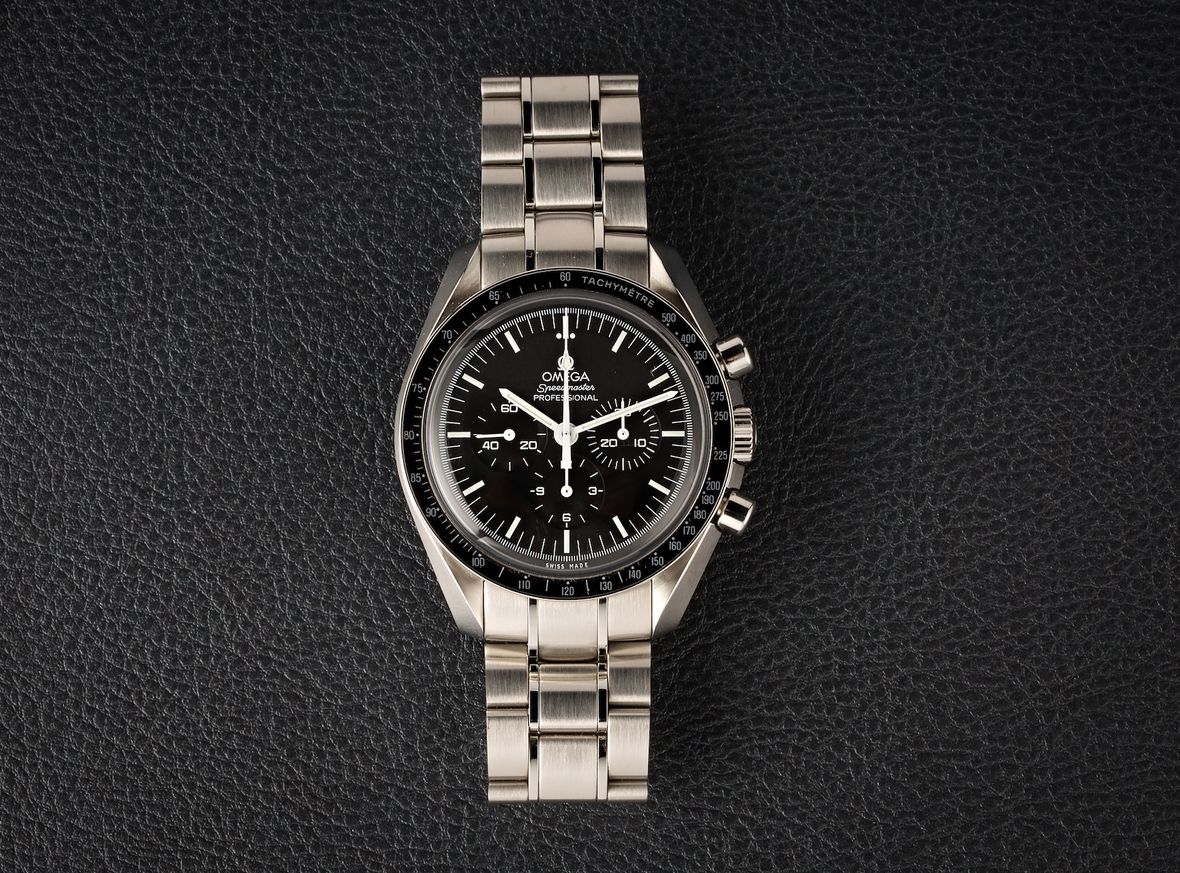
Who Actually Owns the NASA Moon and Space Watches?
Could any of the watches still be in the hands of the astronauts? It’s possible. And if so, they might even be able to keep them – or sell them. Conventional wisdom says that the true lunar-worn watches will never end up in private hands: since NASA issued the watches, they remain government property. However, it’s no longer quite that simple.
Apollo 14 astronaut Edgar Mitchell tried to sell a camera he kept from the mission at a Bonhams auction in 2011. The U.S. government filed legal action and Mitchell was forced to return it to NASA since the government had no record that they’d transferred ownership of it to him.
However in 2012, Barack Obama signed a new bill into law guaranteeing the “full ownership rights” of most anything the crew members of the Apollo, Mercury, and Gemini missions still had in their possession (with the exception of moon rocks and spacesuits.) Given that Omega Speedmaster prices are on the rise and higher than ever, this issue still generates plenty of controversy.
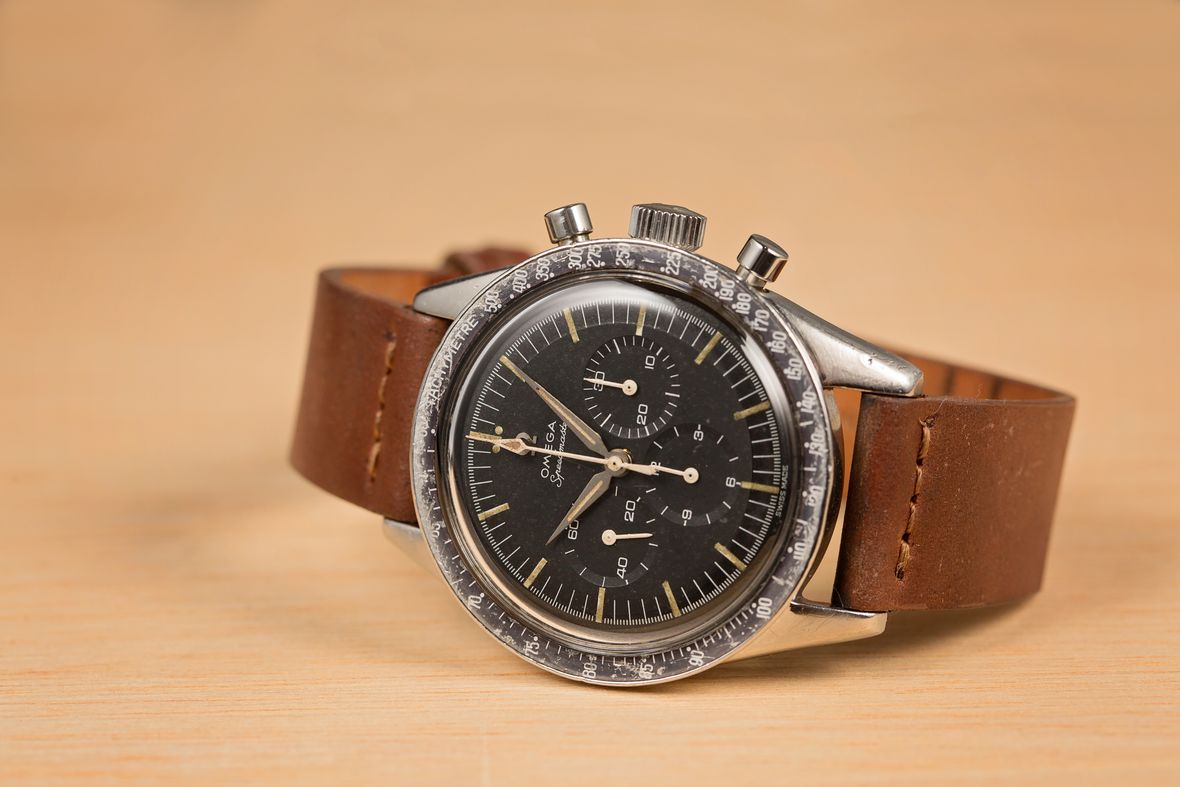
The Iconic Omega Space Watch
Since becoming the first watch worn on the Moon, the Omega Speedmaster has gone on to serve faultlessly through innumerable space missions. Within the greater Speedmaster collection, Omega has released a bewildering number of different guises as well as limited edition examples.
The Speedmaster has continued to be developed and tested exhaustively, and a version is being reportedly designed to accompany the first manned mission to Mars, which is scheduled for 2030. The checks for that trip are likely to be even more demanding than for the moon, so it will certainly be interesting to see what type of Speedmaster that Omega puts forward.
While the Speedmaster has been released with automatic and even quartz movements, for the true purist, only a manually-winding model hits the right note. Plenty of different watches have traveled into space and there is even a handful that has made it to the lunar surface, but for the diehard Omega collector, the Speedmaster will always be the one and only Moonwatch.
